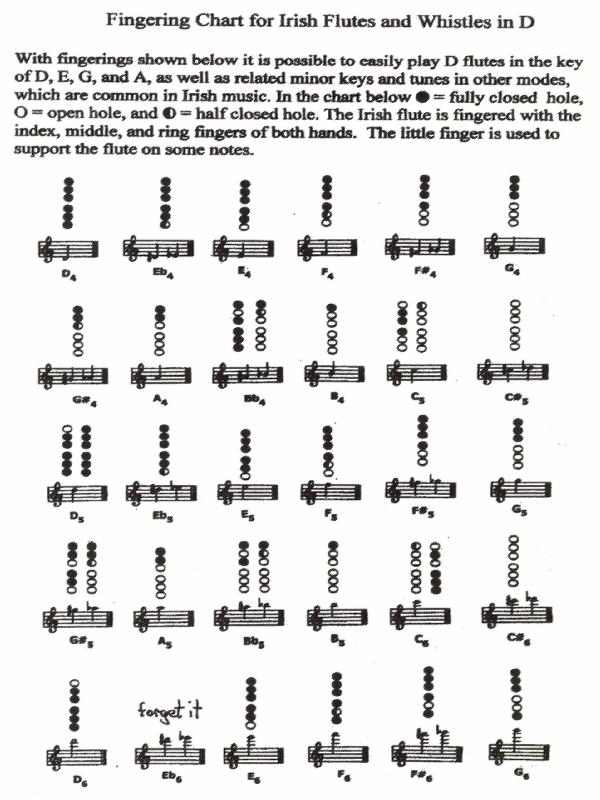Here is a simplified finger chart for my 9-hole chromatic flutes (low D and G). “T”= hole closed with the thumb; “F”= hole is closed with the finger; “H”= hole half closed; “O”= open hole, not covered.
FTFF TFFFF key of D, key of G
FTFF TFFFH D# G#
FTFF TFFFO E A
FTFF TFFOO F A#
FTFF TFOFO F# B
FTFF TOOFO G C
FTFF OOOFO G# C#
FTFO TOOFO A D
FTOF TFFOO A# D#, cross-fingered note
FTOO TOOFO B E
FOOO TOOFO C F
OOOO TOOFO C# F#
FTFF TFFFF D G
As you can see, in the upper part of the scale I choose to stabilize the flute with the right hand thumb and ring finger. These holes can remain open if you prefer. There are also a couple of the highest notes in the second octave that sound more on pitch with alternate fingerings. Just experiment and see what works best for you. The half-holed D# on the low D flute doesn’t sound well, which is why a key is usually required to play this note well. The half-holed G# works better on the smaller G flute.






